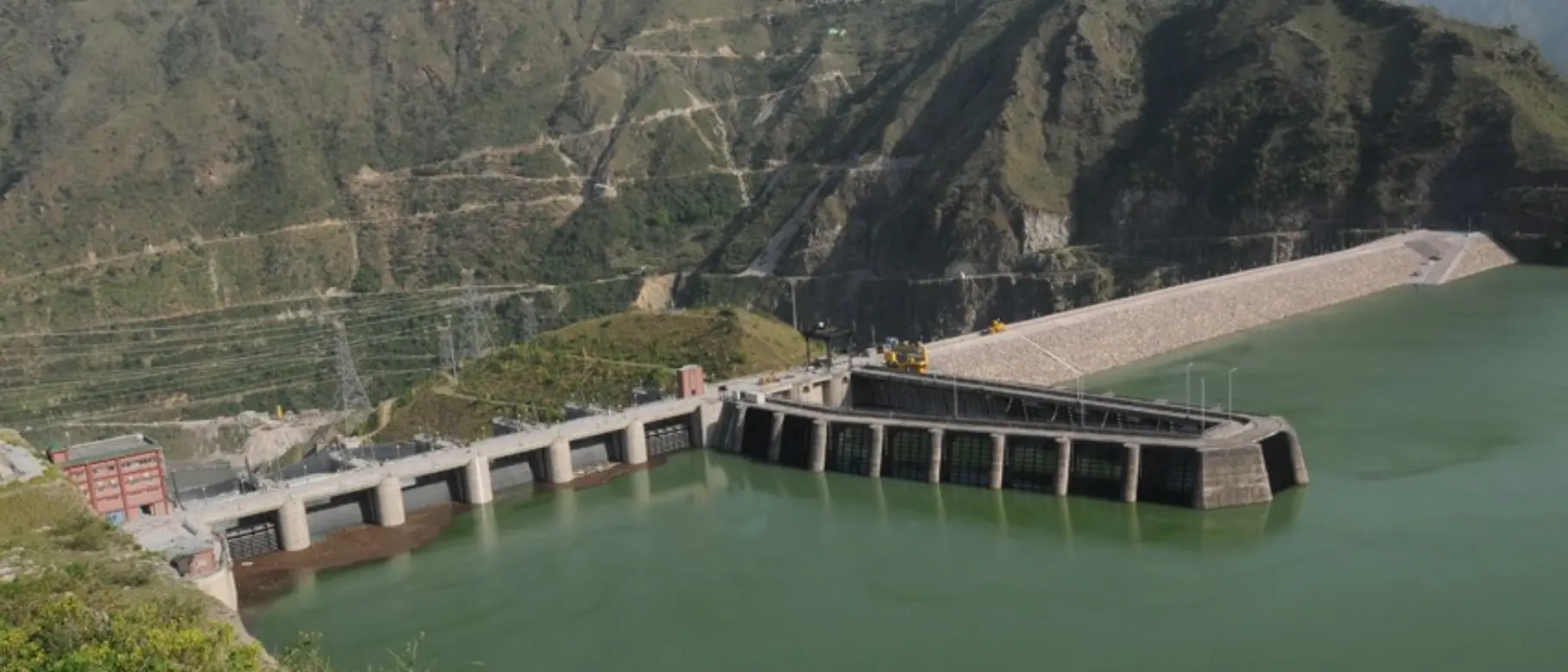
Hydroelectric Project in Kinnaur District in Himachal Pradesh
Hydropower at Satluj in Kinnaur
Between Karcham and Wangtoo, the project harnesses the power of the Satluj River to generate renewable electricity. Four turbines with 250 MW each feed into the North Indian grid. The run-of-river power plant with a small reservoir was fully commissioned in 2011.
Project goals
Electricity, peak load, grid stability
The project aims to reduce the electricity shortage in the Northern Region and stabilize the grid. The plan is to generate 4,463.88 GWh of renewable energy per year (90% reliable) and 1,000 MW of peak load throughout the year. This means that the electricity fed into the grid will predominantly replace electricity generated from fossil fuels.
Technical details
| Technologie | Verfahren | Besonderheiten |
|---|---|---|
| Beton-Schwergewichtsdamm | Diversionsdamm | Höhe 98 m; kleines Reservoir 588.400 m²; Leistungsdichte 1.699,52 W/m² |
| Entsander | 4 unterirdische Desilting-Kammern | Abscheidung aller Partikel > 0,2 mm |
| Triebwasserführung | Headrace-Tunnel | Durchmesser 10,48 m; Länge 17 km |
| Krafthaus | Untergrund-Kraftwerk | Standort Wangtoo; 4 Turbinen/Generatoren |
| Rückführung | Tailrace-Tunnel | Länge 1,3 km; Rückleitung in den Satluj |
| Standort | Geografische Koordinaten | 31°30’50’’–31°32’10’’ N; 78°11’15’’–78°01’05’’ E |
Economic and social benefits
- 1
Workplaces
During the construction phase, jobs are created for local workers in the medium term; there is also permanent employment for operation and maintenance during operation.
- 2
Infrastructure
Plans include a school (10+2), an Industrial Training Institute, a 40-bed hospital and the upgrading of roads and bridges in the surrounding area.
- 3
Power supply
The project supports the Northern Region with a continuous, qualitatively stable supply of electricity.
- 4
Economy
It helps to reduce the gap between electricity supply and demand and creates orders for local companies, suppliers and service providers.
- 5
Environment
Replaces fossil power generation and thus avoids specific emissions; no solid residues (e.g. ash) are produced during operation; measures for catchment area management (reforestation, check walls, pasture improvement) are planned.
- 6
Technology
Use of efficient turbines and generators; transmission at high voltage to limit line losses.
Global climate significance
Emission reduction
An average of 3,541,917 tCO2e per year is estimated for the 10-year period, totaling 35,419,170 tCO2e.
Renewable energy
Annual generation of 4,463.88 GWh (with 90% reliability) from hydropower.
Peak load
Year-round 1,000 MW peaking power to cover peak loads in the grid.
Waste-free
No solid waste is produced during operation; the catchment area is stabilized by measures such as reforestation and check walls.
Conclusion
The project reliably supplies renewable electricity and supports grid stability in northern India. With modern hydropower technology and accompanying local measures, it brings tangible environmental and locational benefits.



